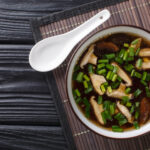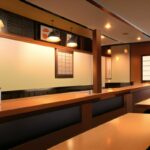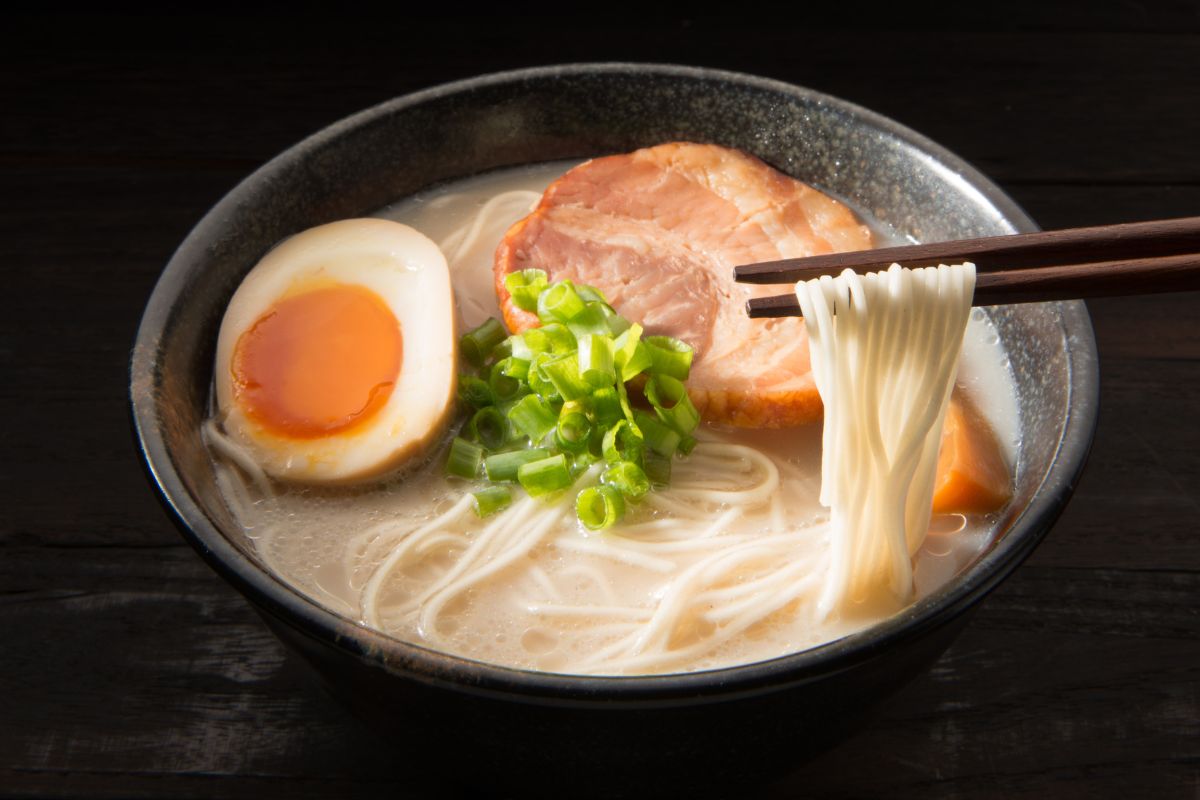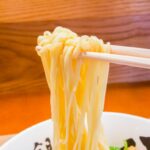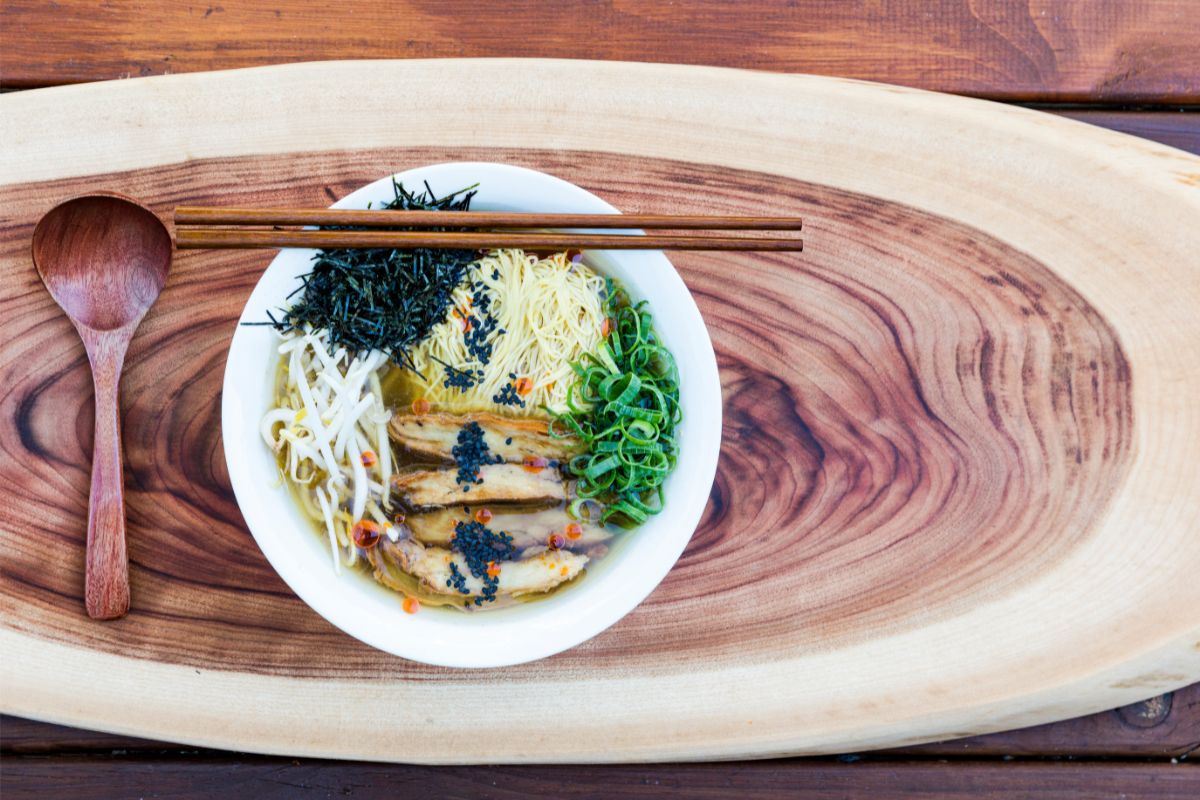While many people recognize the significance of rice in Japanese cuisine, tourists and transplants quickly discover that noodles are equally beloved throughout the country. Aside from the ever-popular ramen, there are two other common types of noodles you’ll find in Japanese restaurants both in the country and around the world: soba and udon.
Not only do soba and udon noodles look different, they’re also very different in how they’re made and what types of dishes they’re featured in. You’re likely to encounter these and other types of noodles if you’re dining in Japan, and it’s worth going out of your way to explore different dishes that use these noodles, to experience how they can elevate a dish.
If you’re a noodle lover whose mouth is already watering, read on to learn all about these two very distinct, delicious, traditional Japanese noodles.
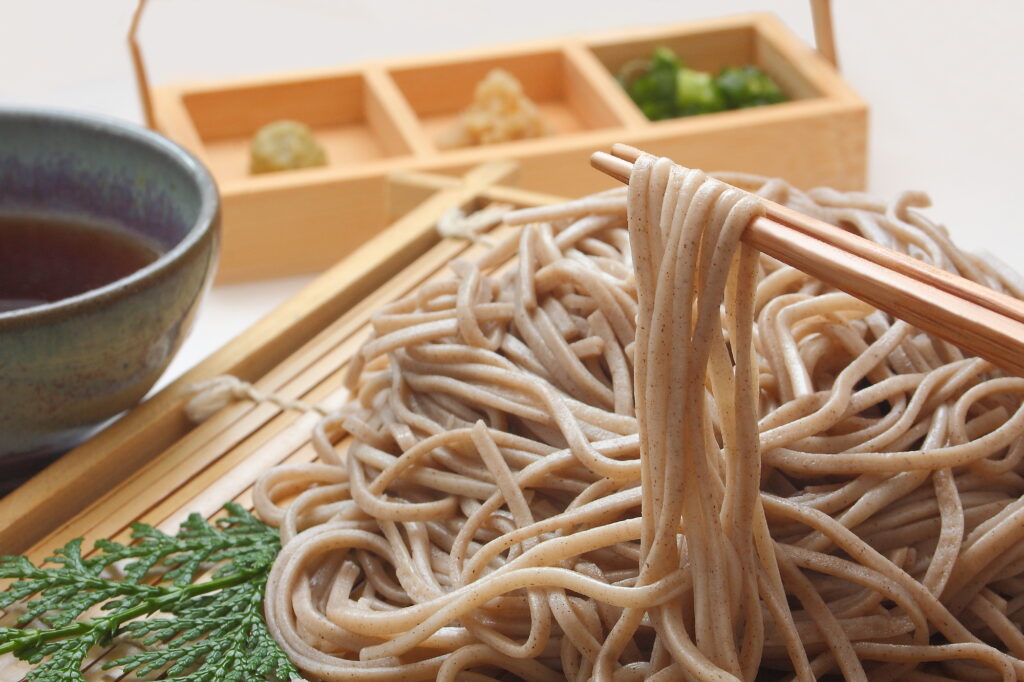
A brief history of noodles in Japan
Japan and noodles have a long history. While first reaching Japan around the year 800, during the Heian period, noodles didn’t gain widespread popularity until the 1800s, soon becoming one of the nation’s most affordable, flavorful and nutritious staple foods.
Udon first appeared in Japanese cuisine around the 700s, and there are many stories explaining its origin. Soba, on the other hand, became popular much later, during the Edo period (1600-1800). These two popular noodles are beloved in Japan and around the world today. They’re served in both hot and cold varieties, along with condiments, sauces, spices and broths.
Soba vs. Udon: a breakdown of characteristics
While soba and udon are both noodles, their similarity ends there. These two types of noodles are quite different, thanks to the ingredients and process used to make them. They’re also used in a variety of different dishes for their ability to add texture, enhance flavors and improve the depth of certain meals. In many ways, they represent both ends of the spectrum for noodles in Japan.
Here are some of the key differences between these two popular types of Japanese noodles:
- Ingredients. Soba is made from buckwheat flour, which gives the noodles their characteristic color and flavor. Udon, on the other hand, is made from a combination of wheat flour, water and salt. Because of this, soba noodles are okay for those with gluten sensitivities while udon noodles, unfortunately, are not.
- Texture. Soba noodles are thin and delicate, often a few inches shorter than traditional spaghetti noodles. They feature a distinctive slightly grainy texture. Udon noodles are thick, glossy and have a much chewier, thicker texture compared to soba.
- Taste. Generally, soba noodles feature a one-of-a-kind earthy, nutty flavor. Since they’re so distinctive in terms of taste, soba noodles are often best served with a mild broth or simple dressing, allowing the subtle nutty flavor to come through. Udon noodles are dense and delicious, often served in noodle soups with hot broth.
- Color. Soba noodles are brownish-gray in color, while udon noodles have a creamy white appearance. Udon are often glossier than soba.
Look for these features if you’re trying to identify which noodles are in your next bowl of ramen or plated in front of you with seafood. Remember these key characteristics: thick and white means udon, while thin and grainy generally means soba.
Popular Soba noodle dishes
The Japanese people—and hungry eaters across the world—love soba noodles! They’re not only delicious when combined with traditional Japanese spices, sauces and condiments, they’re also highly nutritious. They’re one of the most versatile staples of Japanese cuisine. You’ll find a variety of soba noodle dishes at restaurants and shops across Japan, including favorites like:
- Kake Soba. Featuring soba noodles served in a flavorful kakejiru broth, kake soba is one of Japan’s most popular noodle dishes. It’s seasoned with bonito flakes, dried sardines (niboshi) and kelp, for a one-of-a-kind flavor.
- Kitsune Soba. A filling and beautiful dish, kitsune soba features a satisfying broth with kelp, dried kombu and mushrooms swimming around delicate soba noodles. Light and sweet fried tofu tops the soup, creating a hearty meal.
- Zaru Soba. In the mood for a cold noodle dish? Zaru soba is a unique dish featuring cold soba noodles flavored with tsuyu, a soy- and mirin-based dipping sauce.
- Yaki Soba. A popular street food across Japan, yaki soba is a sizzling stir-fried noodle dish with a flavor all its own. It includes buckwheat soba noodles fried with your choice of protein and veggies, all seasoned with a tangy Worcester-style sauce.
Popular Udon noodle dishes
Udon is a popular, cheap meal you’ll find in restaurants all across Japan. These noodles are dense and delicious, always packing a flavorful punch no matter how you order them! Some of the most popular udon dishes—in Japan and across the world—include:
- Kake Udon. Similar to kake soba, this simple noodle soup features a flavorful blend of dashi stock seasoned with mirin and soy sauce.
- Curry Udon. Featuring thick noodles coated in Japanese curry roux, this unique, flavorful dish will satisfy your cravings for savory noodles in an instant!
- Yaki Udon. This traditional udon is made from stir-fried glossyuUdon noodles, plus the protein and vegetables of your choice. Flavored with savory soy and mirin sauce, the result is truly slurp-worthy.
- Tempura Udon. A savory, hot broth dish featuring delicious udon noodles and crip pieces of tempura shrimp or vegetables, tempura udon is a beloved traditional Japanese dish that’s flavorful and filling. The broth is the perfect complement to udon, with a perfect blend of mirin, soya sauce and dashi.
Soba noodles are the healthier choice
Soba and udon differ in another key way—nutrition. In general, soba noodles are the healthier choice, thanks to their primary ingredient: buckwheat flour. Buckwheat flour offers plenty of health benefits, and it’s rich in essential vitamins and minerals including fiber, iron and vitamin B.
They’re also refreshing, thought by many to provide a major energy boost. Even people on low-carb diets consume soba regularly. The noodles are filled with healthy carbs that won’t derail your diet.
Soba is also a delicious alternative for gluten-sensitive eaters—as long as you’re ordering it in Japan. Most soba served in Japan is made entirely from buckwheat, a gluten-free grain. Dishes outside Japan often mix buckwheat and wheat flour—while not completely gluten-free, these dishes are low in gluten. If you’re gluten intolerant, always check ingredient lists and make sure you’re eating soba made entirely from buckwheat.
Two of the most popular types of Japanese noodles
If you’re in the mood for noodles, you’re not limited to soba or udon varieties. There’s a whole range of noodles that are deeply engrained in Japanese cuisine, and you’re bound to end up trying more than a few of them if you’re in the country for any period of time.
Here’s a look at some of the noodle varieties worth trying, and how they differ from the popular soba and udon varieties you’re likely to see in many dishes:
- Ramen. Aside from soba and udon noodles, ramen are the most popular types of noodles in Japan—largely because they’re part of common dishes, like miso ramen. These are long, thin wheat noodles that have a chewy texture.
- Somen. These thin wheat noodles have a chewy texture, and can be served hot or cold. They’re often part of strongly favored dishes because of their ability to absorb flavor and add depth to dishes.
- Hiyamugi. While less popular than the other noodles on this list, hiyamugi noodles are a nice intermediary between soba and udon varieties. They’re a wheat noodle that’s long and chewy—often served plated, instead of in a bowl.
- Shirataki. Gluten-intolerant diners will love this alternative to buckwheat soba noodles! They’re a type of “carb-free” pasta that’s often added to dishes to give them texture and depth, such as with shrimp and vegetables.
- Harusame. These flavorless noodles are made from mung beans, which means they’re another gluten-friendly option. Because they’re flavorless, you’ll often find them in soups and stews, where other flavors and ingredients readily cling to them.
Many restaurants with noodles on the menu will describe which noodles are in various dishes. That said, some more local spots might not. Generally, it’s best to stick with whatever noodle option the dish comes prepared with—unless of course you have a gluten sensitivity. If you’re restricted to soba and other gluten-free noodles, it’s best to ask the wait staff what types of noodles are in each dish before ordering, and make substitutions where needed.
Enjoy Japan’s most popular (and delicious) noodles
Noodles are synonymous with traditional Japanese cuisine. Whether you’re stopping by your favorite Japanese restaurant or you’re planning a trip to Japan, enjoy the unique flavors of Japanese cuisine by ordering a delicious noodle dish.
Whether you choose soba or udon—or both—you’re in for a flavorful experience like no other! And, if you’re planning to travel around the country, you’re bound to experience different takes on similar dishes, depending on the prefecture or city you’re dining in. Noodles are nothing if not a versatile food, after all!
- How Much Money Can You Make Teaching English in Japan? - December 12, 2022
- The Best Places to Teach English in Japan - December 9, 2022
- The Best Credentials for Teaching English in Japan - December 8, 2022

